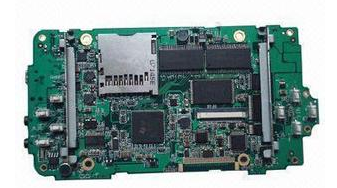The PCB impedance refers to the parameters of resistance and reactance, which hinder the alternating current. In the production of PCB circuit boards, impedance processing is essential. The reasons are as follows:
1. First of all, after the PCB is finished, it needs to be patched. Therefore, when making the PCB, it is necessary to consider plugging and installing electronic components. After plugging, the conductivity and signal transmission performance are considered, so the lower the impedance is required. Well, the resistivity is lower than 1&TImes;10-6 per square centimeter.
2. During the production process, PCB circuit boards have to go through processes such as copper sinking, tin plating (or chemical plating, or thermal spray tin), and connector soldering. The materials used in these links must ensure that the resistivity is low to ensure The overall impedance of the circuit board is low to meet the product quality requirements, and it can operate normally.

3. The tin plating of PCB circuit boards is the most prone to problems in the production of the entire circuit board, and it is a key link that affects impedance. The biggest defect of electroless tin coating is easy discoloration (easy to be oxidized or deliquescent) and poor solderability, which can lead to difficult soldering of circuit boards, high impedance, poor electrical conductivity, or instability of overall board performance.
4. There are various signal transmissions in the conductors in the PCB circuit board. When it is necessary to increase its frequency in order to increase its transmission rate, the line itself will cause the impedance value to change due to factors such as etching, stack thickness, wire width, etc., So that the signal is distorted and the performance of the circuit board is degraded, so it is necessary to control the impedance value within a certain range.
As the design of electronic products becomes more and more sophisticated, and the difficulty of packaging increases, the improvement of SMT patch yield has become one of the key factors to reduce the cost of hardware manufacturing. BGA, IC, etc. in PCBA are key components, and the one-time success rate of these components is the key point during soldering. PCB manufacturing has become a priority.
PCBA test process
Everyone is familiar with PCB and PCB production and processing processes, so today I will talk to you about the test process in patch processing.
The PCBA test is mainly to test the PCBA board for IC programming, circuit continuity and current, voltage, pressure and other aspects. PCBA has many uncontrollable factors in the production process, and it is difficult to ensure that PCBA is a good product. PCBA testing is a necessary link to strictly control the quality of shipments. So what are the procedures for PCBA testing?
PCBA testing generally develops a specific test process based on the customer's test plan. The basic PCBA test process is as follows:
Program burning-ICT test-FCT test-aging test
1. Program burning
After the PCBA board completes the welding process of the front end, the engineer begins to program the microcontroller in the PCBA board to enable the microcontroller to achieve specific functions.
2. ICT test
The ICT test mainly uses the test probe to contact the test point of the PCBA to realize the test of the PCBA circuit open circuit, short circuit and the welding condition of the electronic components. The accuracy of the ICT test is relatively high, the instructions are clear, and the scope of use is relatively wide.
3. FCT test
FCT test can test the environment, current, voltage, pressure and other parameters of PCBA. The content of the test is relatively comprehensive, which can ensure that the various parameters of the PCBA board meet the design requirements of the designer.
4. Aging test
The aging test can ensure the stability of the product by continuously energizing the PCBA board, simulating the user's use scene, detecting some difficult-to-find defects, and inspecting the service life of the product.
After the PCBA has passed the above series of tests, there is no problem. The PCBA board is affixed with a qualified label, and finally it can be packaged and shipped.